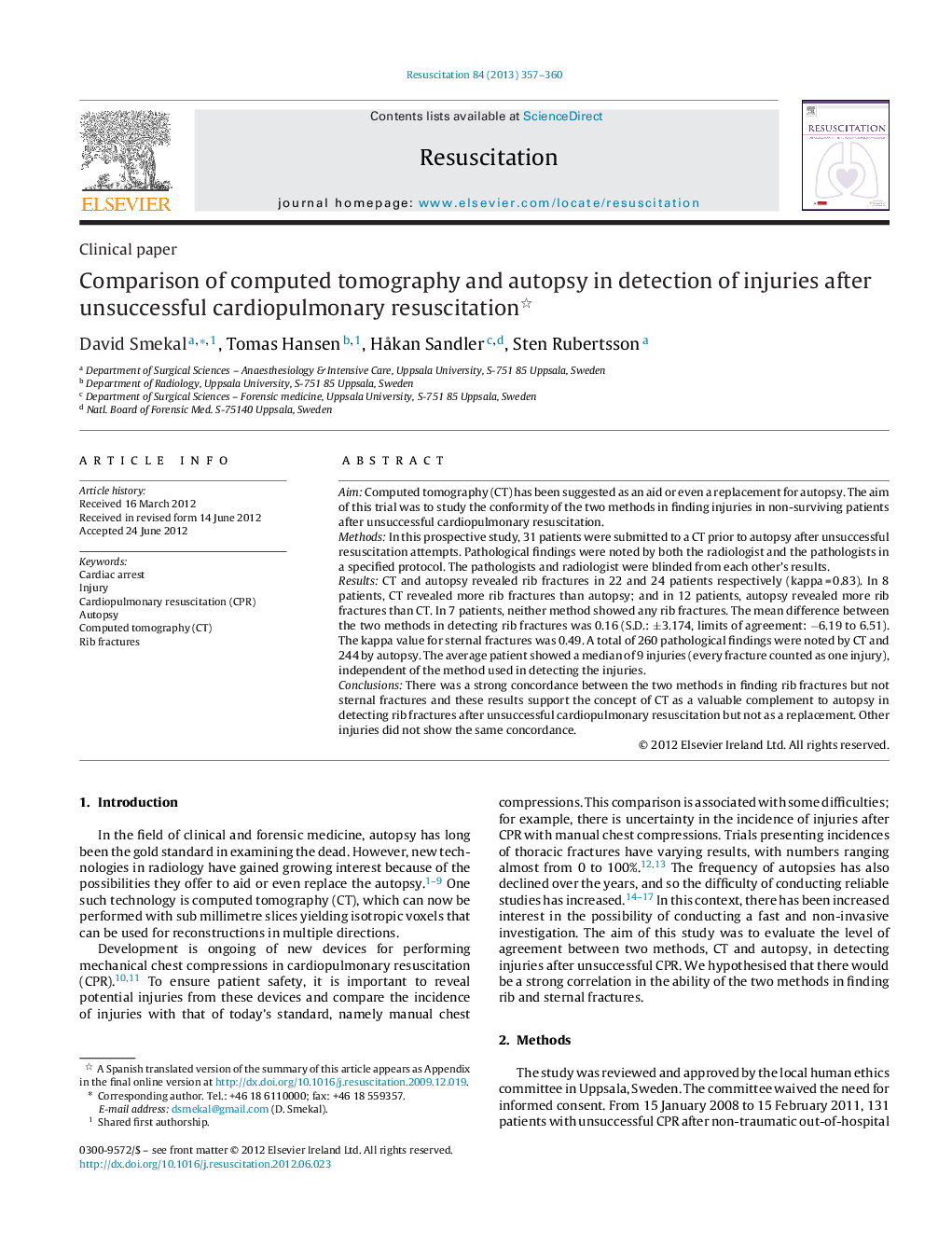| Article ID | Journal | Published Year | Pages | File Type |
|---|---|---|---|---|
| 3008781 | Resuscitation | 2013 | 4 Pages |
AimComputed tomography (CT) has been suggested as an aid or even a replacement for autopsy. The aim of this trial was to study the conformity of the two methods in finding injuries in non-surviving patients after unsuccessful cardiopulmonary resuscitation.MethodsIn this prospective study, 31 patients were submitted to a CT prior to autopsy after unsuccessful resuscitation attempts. Pathological findings were noted by both the radiologist and the pathologists in a specified protocol. The pathologists and radiologist were blinded from each other's results.ResultsCT and autopsy revealed rib fractures in 22 and 24 patients respectively (kappa = 0.83). In 8 patients, CT revealed more rib fractures than autopsy; and in 12 patients, autopsy revealed more rib fractures than CT. In 7 patients, neither method showed any rib fractures. The mean difference between the two methods in detecting rib fractures was 0.16 (S.D.: ±3.174, limits of agreement: −6.19 to 6.51). The kappa value for sternal fractures was 0.49. A total of 260 pathological findings were noted by CT and 244 by autopsy. The average patient showed a median of 9 injuries (every fracture counted as one injury), independent of the method used in detecting the injuries.ConclusionsThere was a strong concordance between the two methods in finding rib fractures but not sternal fractures and these results support the concept of CT as a valuable complement to autopsy in detecting rib fractures after unsuccessful cardiopulmonary resuscitation but not as a replacement. Other injuries did not show the same concordance.
